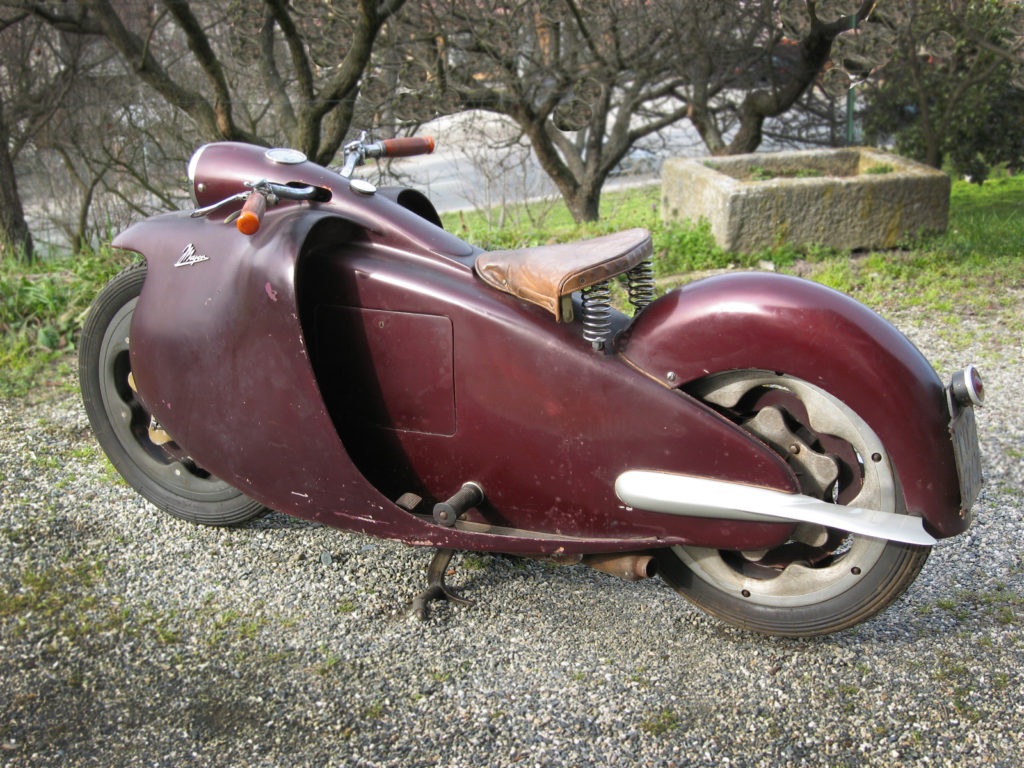
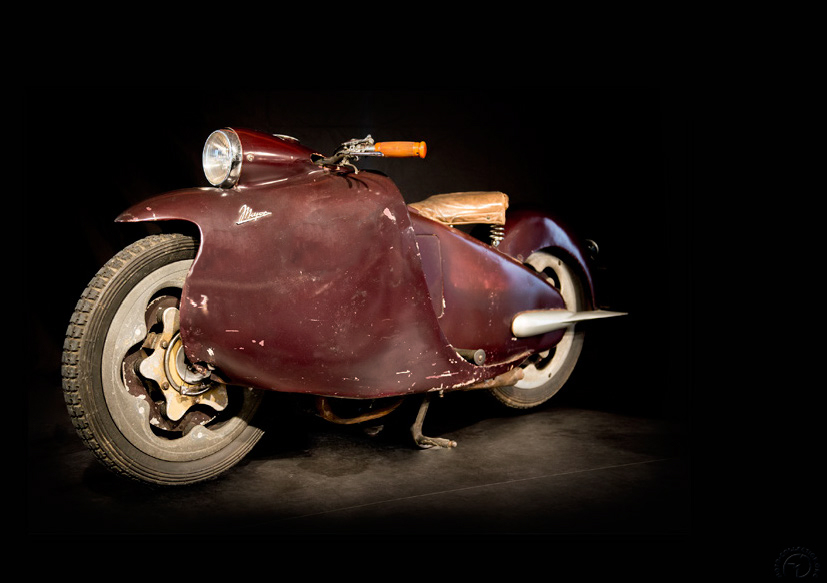

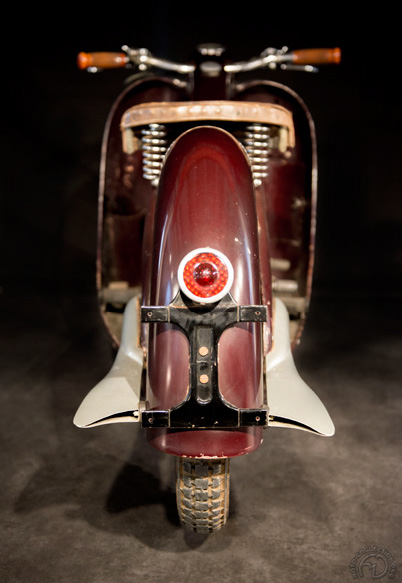
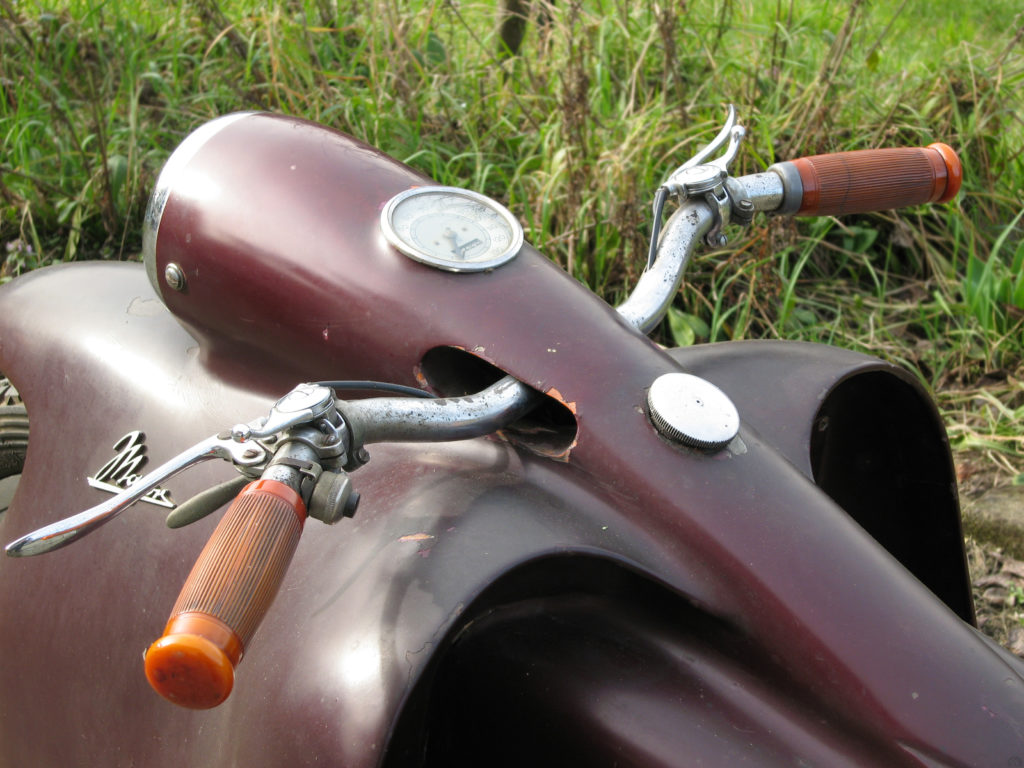

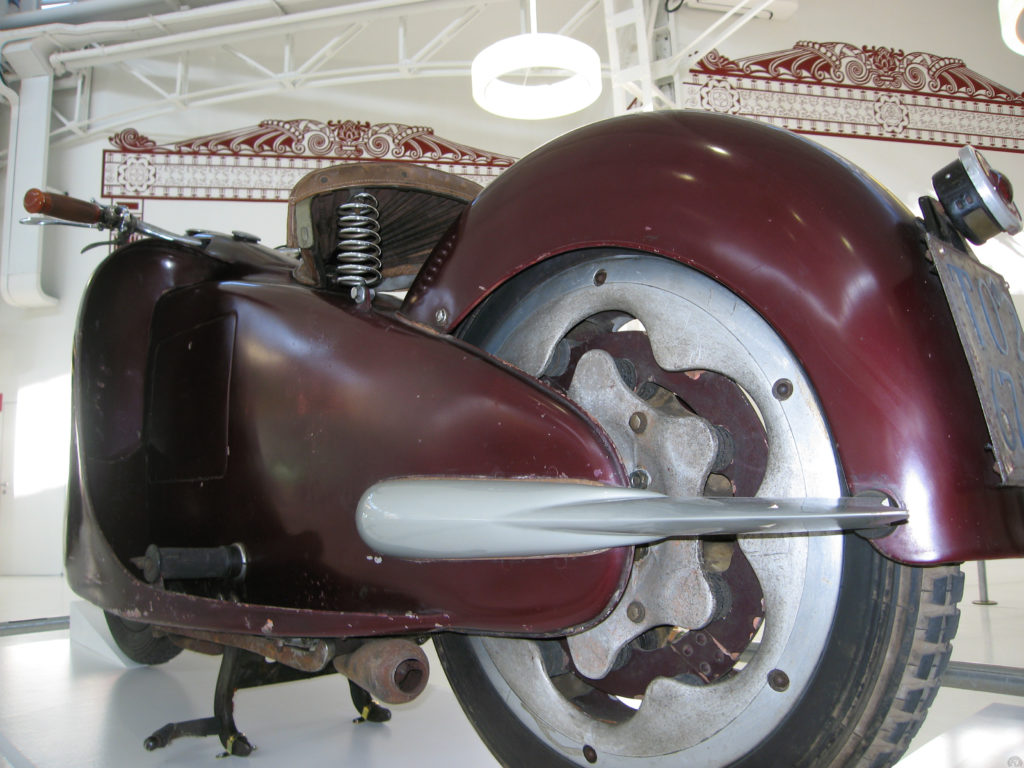
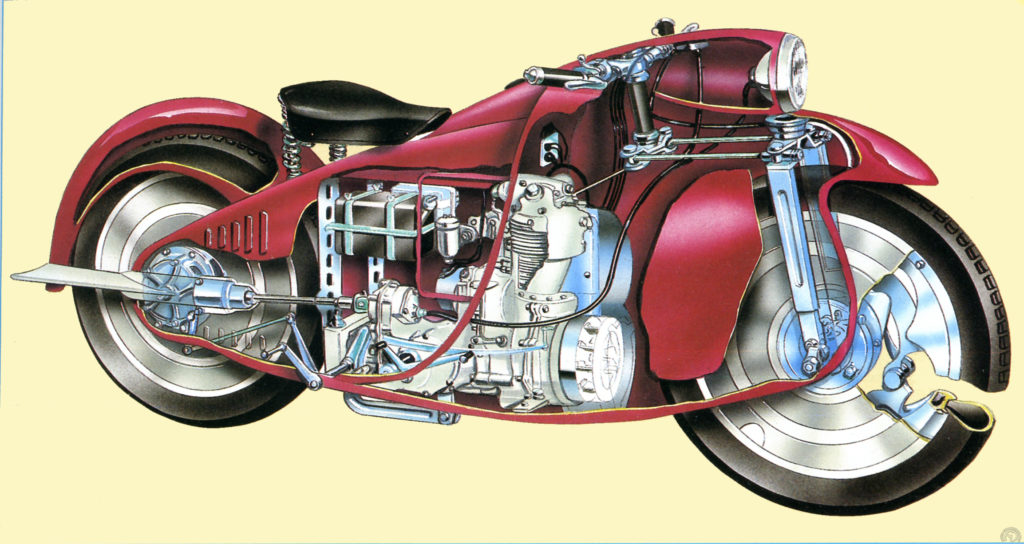
The Moto Major’s 350cc engine was developed in collaboration with engineer Angelo Blatto, who had significant experience in the 1920s and ’30s at Aquila, Augusta, OMB and Ladetto & Blatto. It’s an aero-engine inspired four-stroke, with a turned steel cylinder and an aluminum cylinder head. A fan at the end of the crankshaft provides cooling by forced air, while the long crankshaft drives a four-speed gearbox controlled by footshift, and a shaft final drive. The kickstarter is removable, as on the first Honda 1000 Gold Wing of 1975.
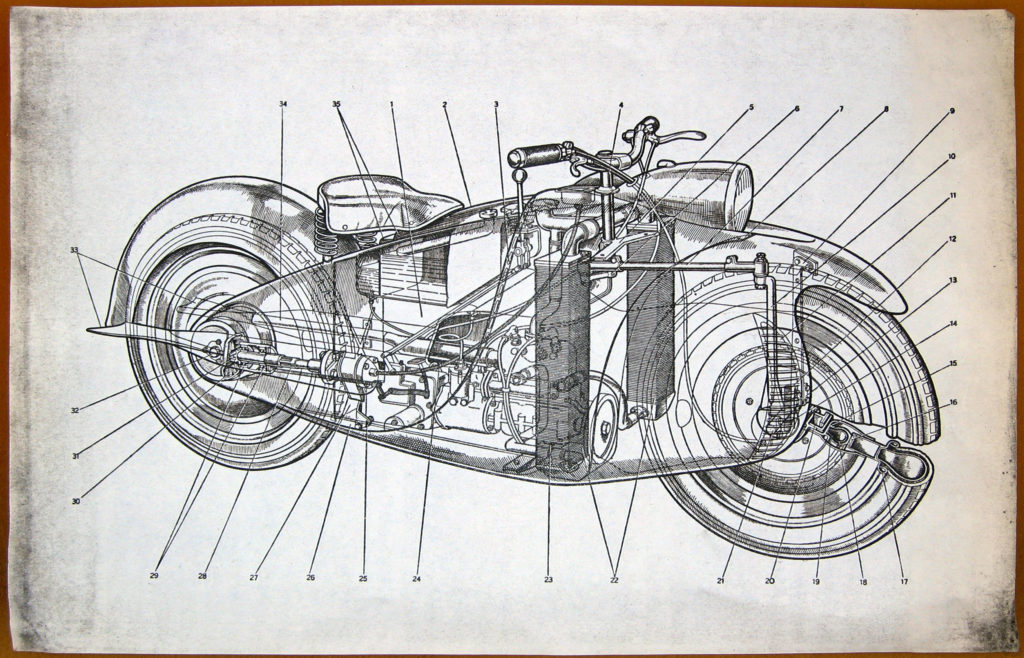
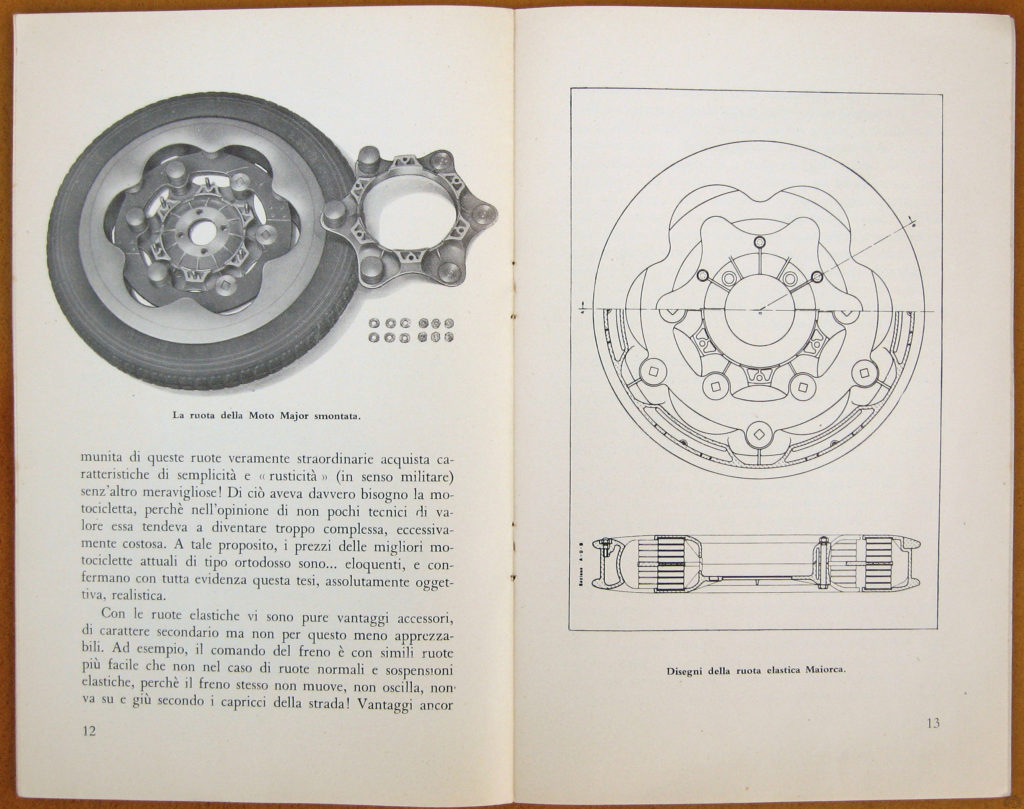
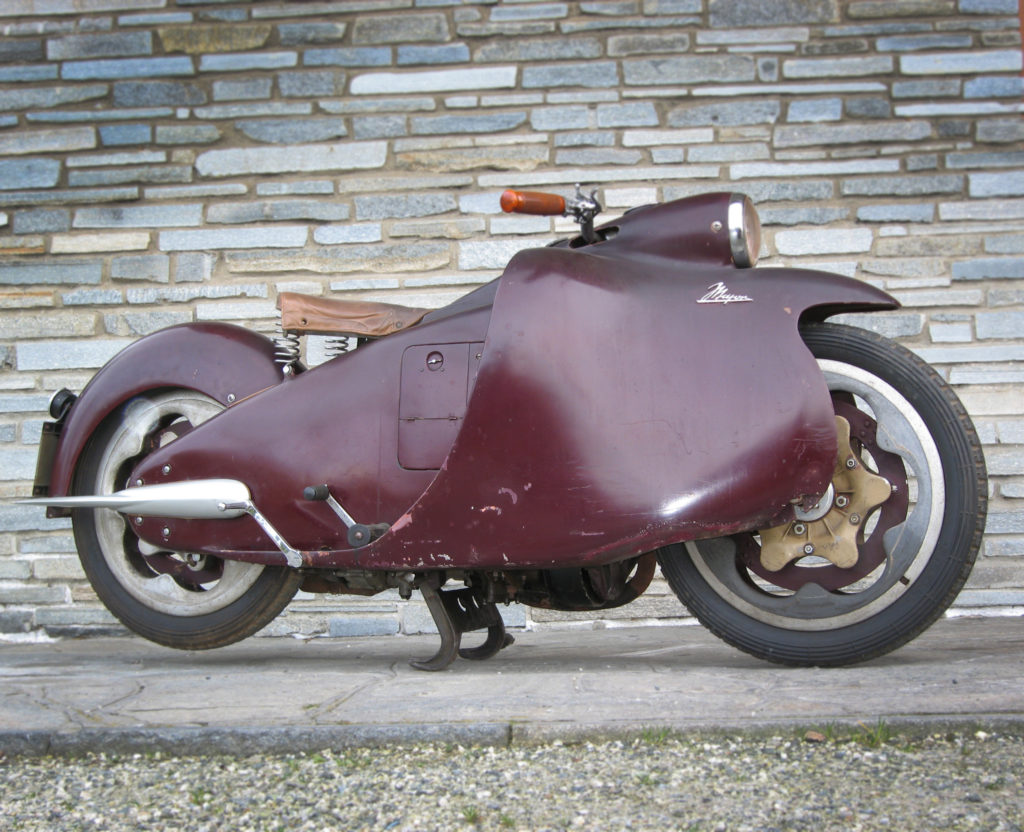
Engine: 4-stroke vertical single-cylinder engine with longitudinal crankshaft / Turned steel cylinder, aluminum cylinder head / Forced air cooling / 349.3cc (76 x 77 mm) / 14 hp @5200 rpm / Dell’Orto carburettor / Lubrication by oil circulation and double pump / Battery-coil ignition.
Transmission: Dry multi-plate clutch / 4-speed gearbox with footshift / Transmission by shaft and bevel gear final drive
Chassis: Self-supporting sheet steel body / Spherical hub and rod-controlled steering / 19″ elastic wheels with 24 deformable rubber-block suspension
Dimensions and Performance: 150 kg in running order (43 kg engine) / Tank 13 liters / 105kmh (63mph)


Related Posts
November 18, 2018
The Vintagent Selects: 2018 Motorcycle Cannonball
The world's toughest vintage motorcycle…

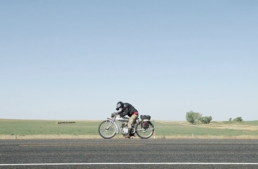
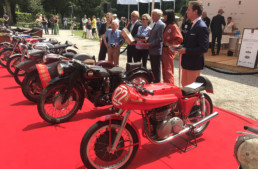
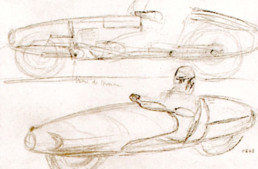
A stunning article Francois . Much more complete and better detailed than the minimalist devoid of details offering Bikexif had presented . This kind of article is the reason I come here .
Suffice it to say this M/C like so many others across history is unfortunately another stunning example of the blatant xenophobia across motorcycling culture that constantly keeps anything genuinely new , innovative or creative from gaining traction .
Have any doubts ? Look at the pathetic EV motorcycles being touted as innovative … that are to a number nothing more than ‘ ICE’s ‘ with a battery pack and an electric motor thereby negating any potential advantage an E/V M/C might possible have over an ICE
Pourquoi 1947 ? Les brevets d’inventions déposés par Salvatore Maiorca le 12 décembre 1945 et les 3 et 7 décembre 1946 en Angleterre et en France. Et on retrouve les dessins des brevets dans le catalogue de 1948.
Puisque vous aimez les histoires détaillées et contrairement aux journalistes vous trouverez sur page facebook des aventures industrielles mais cette fois-ci avec les dépôts des marques, les actes de sociétés, les brevets et des photos……Cela va vous amusez ! https://www.facebook.com/didier.mahistre
Bien à vous
Sorry to say this but only counting weight is an extreme simplification. When impacting an obstruction one encounters impulse forces and these can be very high. Imagine going over a kerb at speed. Actually every bump in the road leads to such an impulse being passed into the suspension because the momentum of the total mass you mention does not want to follow the road that quickly. Local forces can therefore actually be excesive and a design always has to take the most extreme circumstances under normal use into consideration. OK, it was not made to jump over hills and rocks but it was also not designed in an age of ultra flat tarmac surfaces. Furthermore the deforming wheel will introduce momentum induced effects by itself, because the rotating mass will constantly be thrown out off balance = the cenrte of gravity of that mass thrown outside of the wheel axle. Bad news! I expect this would in reality only work reasonably in a straight line, whatever a befriended journalist might say. Everything else however totally convinces.